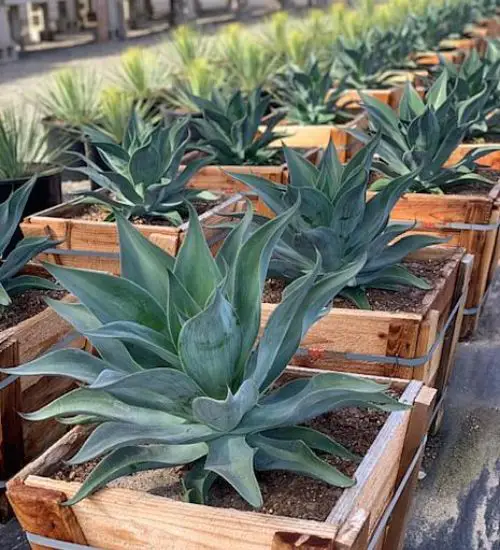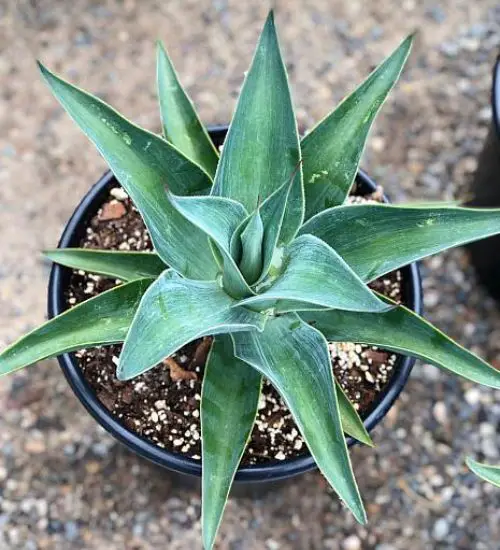Sun: full sun to partial shade
Water: Typical water needs for a succulent
Temperature: Zone 8a from 10° F to 15° F (-12.2 ° C to -9.4° C) to Zone 11b from 45° F to 50° F (7.2° C to 10° C)
Winter Survival: Cold hardy
Propagation: offsets
Flower: in the late spring and summer
Flower Type: Yellow
Toxic: Can be toxic to humans and animals
Dormant: winter
Space Requirement: Indoors & Outdoors
Common Problems: Plants may rot if overwatered, sunburn, pests
Where to buy Agave Blue Flame?
Basc Care for Agave Blue Flame
Watering
Can you water your succulent more than what its need? The answer is yes and no. In extreme conditions, you can water your plants more often when you notice the soil is completely dry.
One simple tip for you is that you can use some online apps to check the soil status before you go water your succulents. I would recommend the ThePlantsCheck app, it has some nice features there.
Fertilizing
Only feed this succulent during its active growing seasons which means no information. Use the right fertilizer applied in the right amounts. Applying half-strength balanced fertilizer every month or so is recommended for optimal results.
Do not fertilize during winter as the plant is dormant.
Sun & Location Requirements for "Blue Flame Agave"
Agave Blue Flame requires full sun to partial shade. It's best to keep it in an area of your garden or home that gets plenty of bright, indirect sunlight throughout the day. When temperatures are too hot and direct sunlight is too intense, try moving "Blue Flame Agave" to a shadier spot for part of the day.
As per this succulent profile, it is only able to stay healthy when the environment temperature is above the range of zone 8a from 10° F to 15° F (-12.2 ° C to -9.4° C).
"Blue Flame Agave" is an ideal choice for gardens in cold climates. Its thick leaves and stems help it retain moisture, and its colorful foliage adds brightness to any winter landscape. This succulent is renowned for being cold hardy and able to survive temperatures down to 0°F. With its ability to withstand frigid weather, Agave Blue Flame is the perfect addition to any frosty winter garden.
Any succulents in the group will need a medium space to grow. You can place your pot at your table or window. Since this plant needs more space than mini succulents, you should consider do not plant them together with other succulents/plants.
Agave Blue Flame also benefits from some indirect light throughout the day as well, so make sure you give it enough space to soak up light without becoming too exposed to heat.
Propagation
Succulents can be propagated easily by taking offsets from the mother plant and replanting them in fresh soil. The offset will eventually grow into a new succulent that is identical to its parent.
Toxicity

Agave Blue Flame can be toxic when ingested. All parts of the plant, such as stems, leaves and flowers, are potentially dangerous and can cause severe reactions in humans and animals when consumed. It is important to stay aware of potential dangers and avoid contact with the succulent if possible.
Pests and Diseases
Agave Blue Flame can be affected common pests and diseases like most of the other succulents such as snails, scale insects, and Snout weevil.
If you do spot any of pest signs, you can treat your succulent using below methods.
- Snails: clean infected plants, soapy water.
- Scale insects: quarantine, clean infected plants, soapy water.
- Snout weevil: apply the systemic insecticide two or three times a year.
Besides that, to prevent serious health issues from happening, keep your succulent in a well-ventilated area and check it regularly for any signs of pests or health problems.


